How to properly store potatoes in winter in a private house without a cellar
For winter storage vegetables are placed in the cellar. This is an ideal place to ensure the safety of the crop. But what if it’s not there? In the article you will find information on how to preserve potatoes without a cellar until spring.
Optimal storage conditions for potatoes
The best conditions for long-term storage of potatoes are temperature from +2 to +4°C and air humidity 85-90%. The storage place should be dry and dark.
Under such conditions, the tubers will last until spring, and some varieties (for example, Lyubava) until the new harvest.
If the temperature is storage above +4°C, the tubers will flake and germinate. If it is below the recommended norm, the starch contained in potatoes will be converted into sugar, and the vegetable will become unpalatable.
Storage methods without a cellar
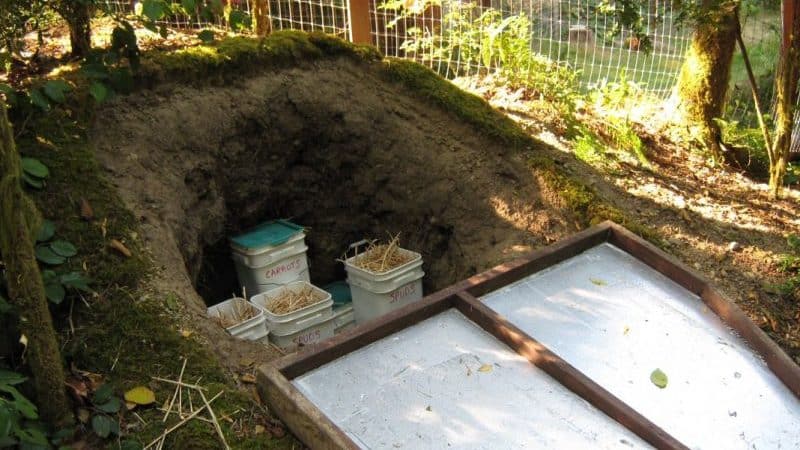
How to store potatoes without a cellar in a private house? Let's talk about several convenient and low-cost options:
- In the basement or subfield of a private house. The main thing is to ensure good thermal insulation so that the room does not freeze in winter and does not warm up in the warm season.
- In the pile. This is an elongated mound of potatoes, laid in the form of a gable roof and covered with heat-insulating material.
- In a hole or trench covered with heat-insulating material on top.
- At room temperature - in a dark pantry or kitchen cabinet. It is advisable that the selected location is away from heating appliances.At room temperature, vegetables last for several weeks without loss.
Preparing storage space
Careful preparation of the storage area extends the shelf life of products.
Basement or subfloor
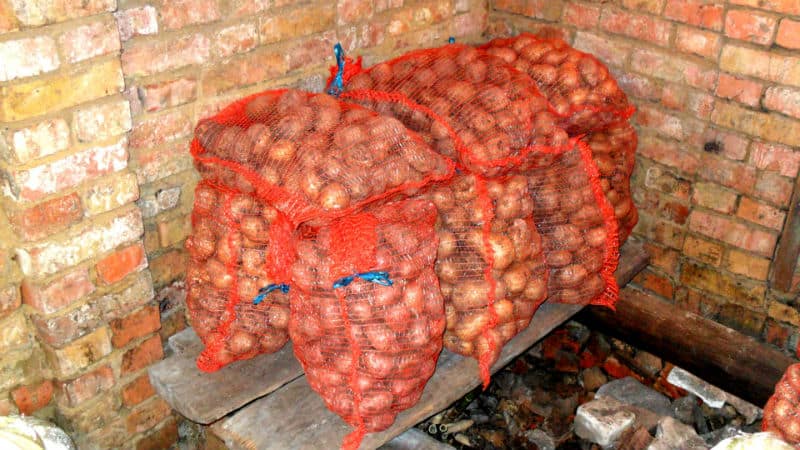
If you plan to store your potato harvest in the basement or subfield of a private house, make sure that the room does not freeze in winter and does not warm up in the warm season. Thermal insulation is made according to the principle of a thermos.
The air in the underground should not stagnate. Air flow is provided by ventilation holes. Disinfection using sulfur bombs, lime or other preparations will help get rid of mold and bacteria in storage.
Burt
When making a pile, the potatoes are placed on the surface of a flat area and covered with heat-insulating material on top. There are also semi-aerial piles, when potatoes are laid out in a pit 25-30 cm deep. The height of the embankment is 90-100 cm.
Insulate the potatoes with a layer of straw (75-80 cm) and a layer on top land (up to 50 cm). To prevent rainwater from flowing inside, the ridge is covered with a gable gutter.
Pit
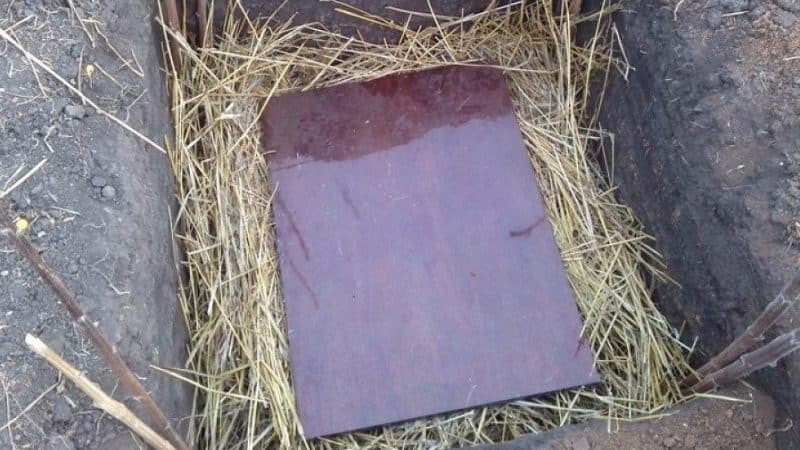
A hole for storing potatoes is dug in a high place so that water does not get in there. The depth of the pit is at least 2 m. Vegetables are laid out in a layer of 80-10 cm at the bottom of the recess. Covered with dry sand and earth on top.
When storing vegetables in pits, it is convenient to use a plastic or metal barrel. It is installed at the bottom of the pit, vegetables are laid and insulation is placed on top.
Foam plastic, fine straw laid in a dense layer, corn leaves and stalks are also suitable for insulation.
And if you use two barrels of different sizes, inserting one into the other, you will get a real thermos in which the crop is not afraid of any frost. The space between the walls of the barrels is filled with heat-insulating material.
Attention! Barrels and boxes installed in the pit will protect the crop from mice.
Such a small cellar can also be set up in a country house, garage or shed to make it convenient to get vegetables in winter. With the arrival of frost, the storage is additionally insulated on top with leaves, peat, and sawdust.
Trench
A trench for storing crops is a ditch up to 0.5 m deep, dug in a dry place. Potatoes are placed in such storage in dry weather. The trench is insulated in the same way as a pit, with several layers (straw, sawdust, peat and earth).
Advice. Insulate the trench from above with spruce branches. This will repel rodents.
A pile, a pit, and a trench are built on a hill so that the place is not flooded with water. In winter, holes and trenches are additionally covered with a thick layer of snow.
Where and how to store at room temperature in the house
In the house, containers with potatoes are placed in the coolest places: under the windows, near the door in the hallway, in the pantry.
Fresh leaves of rowan or wormwood will help protect vegetables from fungi and bacteria that cause rot. They are used to transfer the tubers in a bag. For every 50 kg of potatoes, about 1 kg of foliage is used.
Dry mint leaves help inhibit the germination process of tubers. They are poured in layers 1-2 cm thick at the bottom of the bag, in the middle and on top of the tubers.
Potatoes stored at home are periodically inspected and sorted. Vegetables with areas of rot are removed, and those that come into contact with rotten ones are eaten first.
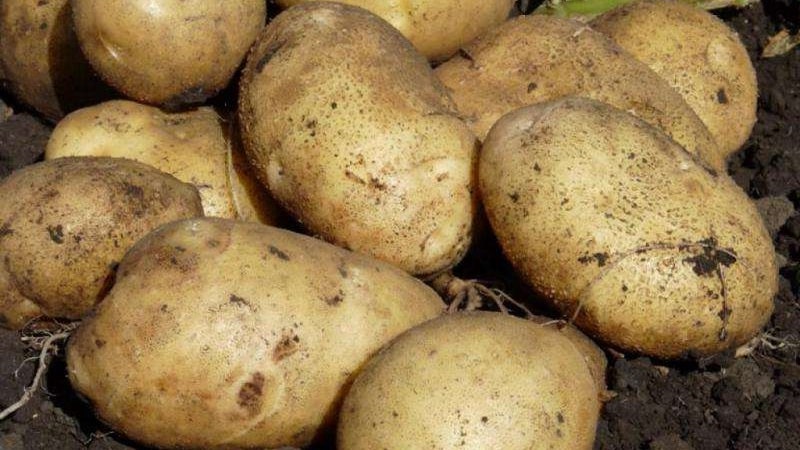
Preparing potatoes for storage
The preparation process begins with washing (if you want to store washed vegetables for the winter). This allows you to detect all potatoes with signs of disease and damage.
Important! If you decide to store washed potatoes, pay special attention to thoroughly drying the tubers after washing.
After washing or cleaning from lumps of adhering dirt, all potatoes are sorted into small, medium and large. Medium-sized potatoes last the longest. Small and large ones are stored worse. Damaged copies are stored separately and should not go into storage.
Tubers intended for planting in the spring are placed in a separate container.
Washed, sorted and inspected vegetables are laid out to dry in the shade or partial shade for several hours. Turn the potatoes over from time to time.
Storage containers
After drying, the tubers are placed in storage containers:
- canvas bags (it is better not to use polypropylene bags, as they do not breathe);
- cardboard boxes with holes for ventilation;
- wooden boxes;
- special boxes for vegetables.
The filled container is placed in a cool place for several days to cool. After this, the harvest is transferred to the prepared storage.
Storage recommendations
Recommendations from experienced gardeners will help preserve the harvest until spring without loss.
Variety selection
Only late and mid-season varieties are stored for long-term storage. Early ripening potatoes are not suitable for winter storage. Even if optimal conditions are created, it will last no more than 2-3 months after digging.
The growth period of mid- and late-ripening varieties is from 90 to 140 days. They contain the maximum amount of carbohydrates and nutrients.
Popular late varieties include Picasso (Dutch selection), Temp (large-fruited variety), Nevsky (medium-fruited variety with round tubers), Nikulinsky (with medium-sized oval tubers), Zhuravinka (Belarusian selection, drought-resistant).
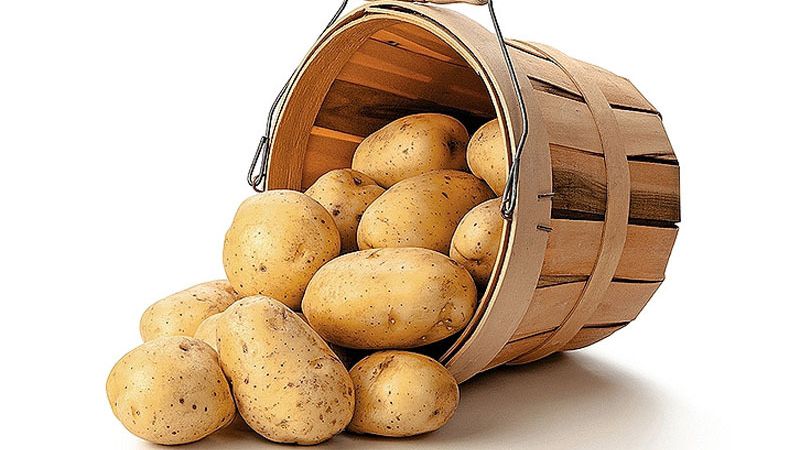
Careful sorting
Before storing vegetables in storage, they are carefully inspected and sorted. All specimens with signs of disease and damage to the skin are rejected.
Attention! Only tubers that are completely healthy and have no damage to the skin can remain for a long time.
Damaged potatoes are stored separately and eaten first.
Storage in small containers
Sorted and dried potatoes are laid out in small wooden boxes, plastic boxes or linen bags. This way the potatoes are better ventilated and less susceptible to spoilage.
Storing separately from other vegetables
It is better to store potato tubers separately from other vegetables. The only good neighbor for potatoes is beets. It absorbs moisture evaporated by the tubers.
Compliance with recommended temperature and humidity levels
An increase in air temperature leads to increased evaporation of moisture. As a result, the tubers become flabby and sprouts appear. Lowering the temperature negatively affects the taste of the vegetable; it freezes and acquires a sweetish taste.
Inspection and overhaul
All vegetables stored in storage are periodically inspected for areas of rot or other problems. If tubers that have begun to rot are not removed in time, the problem will quickly spread to neighboring healthy vegetables.
Failure to comply with the rules for storing potatoes will inevitably lead to spoilage, the development of diseases and crop losses.
Conclusion
Where can you store potatoes if you don’t have a cellar? Resourceful farmers have invented storage methods in piles, pits, and trenches. But it is not so important which of the proposed methods you choose. The main thing is to carefully prepare the tubers for storage and provide them with optimal conditions for long-term storage.
If all recommendations are followed, potatoes can be stored well for many months.